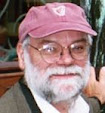Anyone who grew up near Lake Erie in Lake County, Ohio knows about "luckystones." They are small stones of milky quartz, usually white (though occasionally tinged with yellow or orange), that are rounded and polished by the wave action of the Big Lake. Many people collect these beautiful lucky stones.
As a kid in Willoughby, Ohio, I learned from my grandparents that you could put an appropriately sized luckystone under your pillow, and voila, the next morning, you would get a dime from the toothfairy. Does this still work? Of course it does, as long as the little kid informs his parents or grandparents about what he or she is doing. Of course inflation has hit this market too.
Once, while studying geology at the University of Notre Dame, I asked my professor what exactly a luckystone consisted of. He laughed and said he had never heard of a a luckystone--that it was not a scientific geologic name. Now every kid in Willoughby in the 1940s and 1950s knew what a luckystone was! And certainly my children know! So much for the limits of these brilliant Notre Dame profs.
My understanding is that these luckystones are washed down some of the local hills in creeks and rivers where they reach Lake Erie, and then are further rounded and polished by the Lake. I think the rock formations they come from are called "Sharon Conglomerate," and can be found on Gildersleeve Mountain in Chapin Forest (Kirtland), at Thompson Ledges, at Nelson-Kennedy Ledges, and around Chardon by the Best Sand quarries. Best Sand produces some of the purest silica sand in the world from these Sharon Conglomerate formations--and that's lucky for them indeed.
Give it a try. Find a luckystone down by the Lake, put it under your pillow--then let me know.
Subscribe to:
Post Comments (Atom)


No comments:
Post a Comment